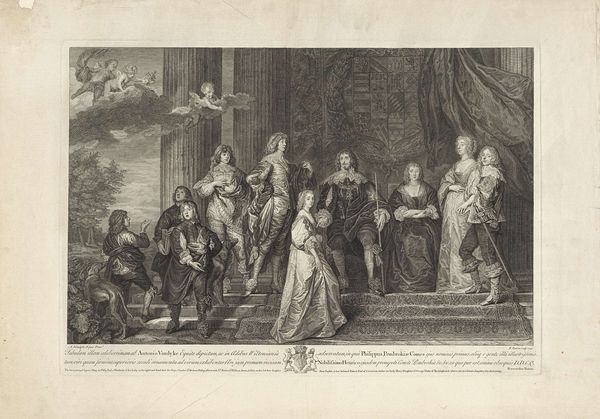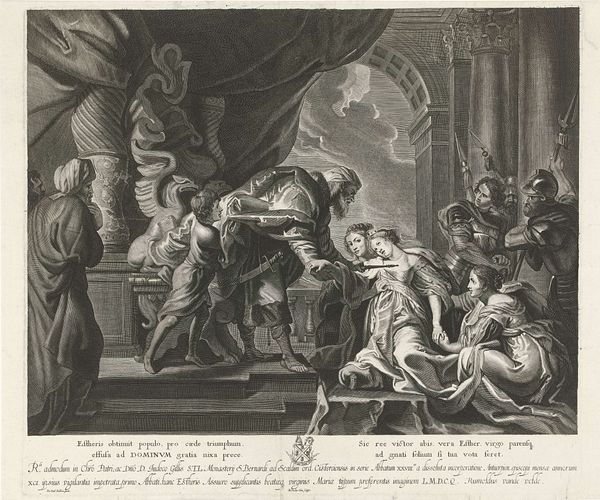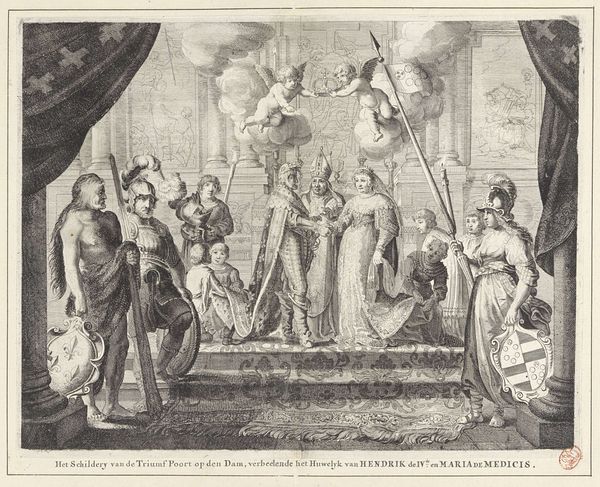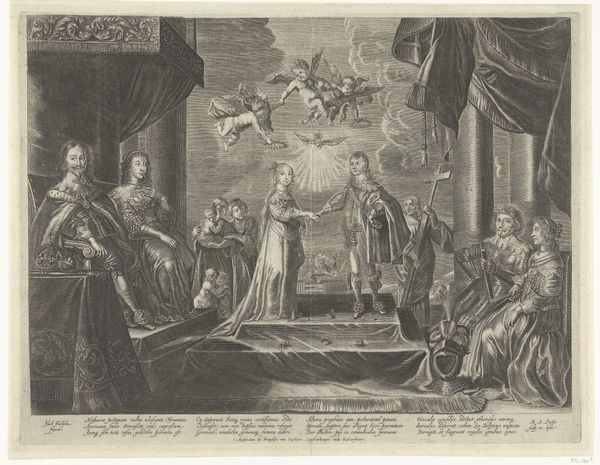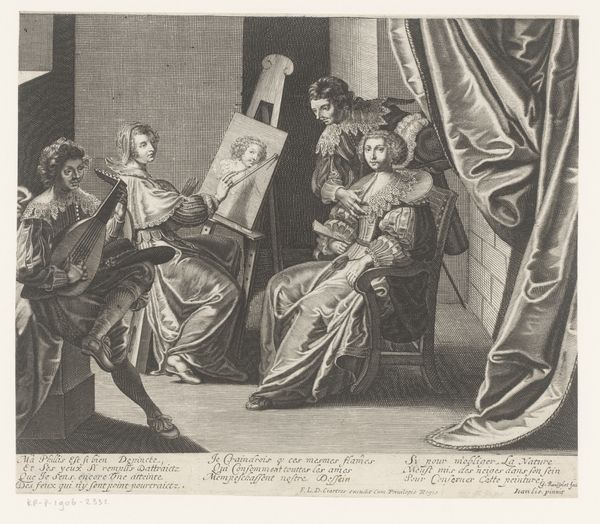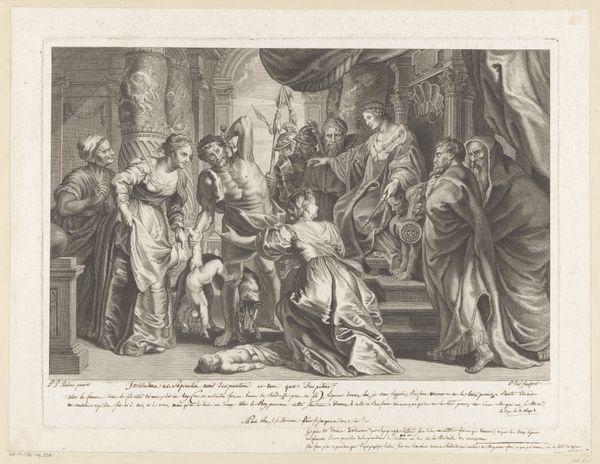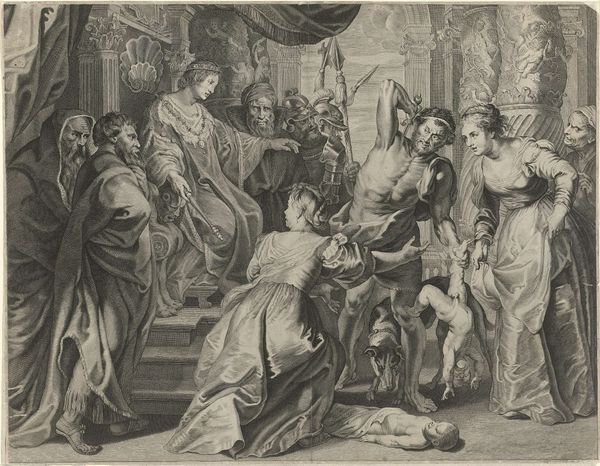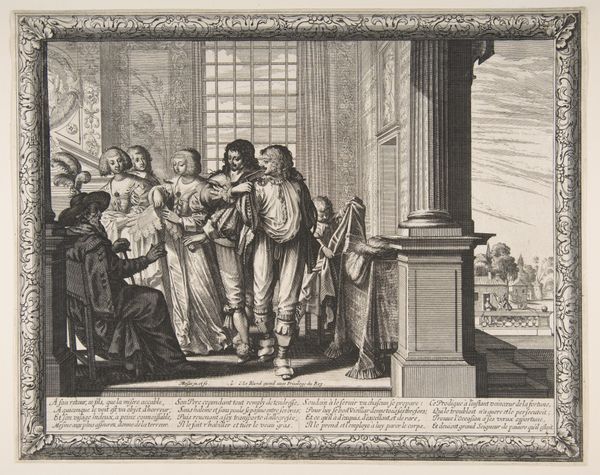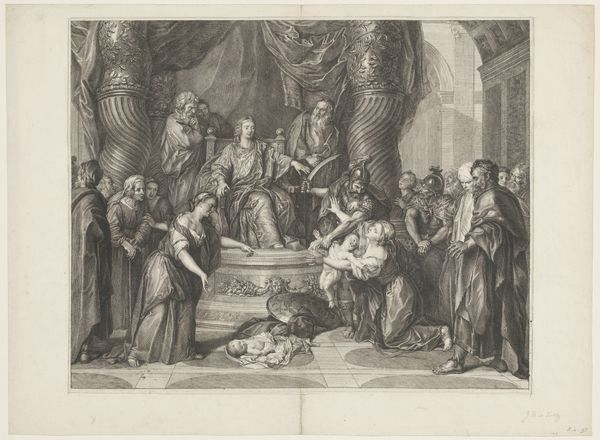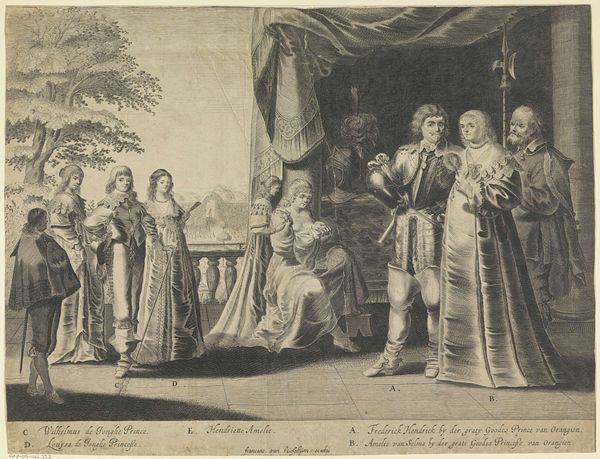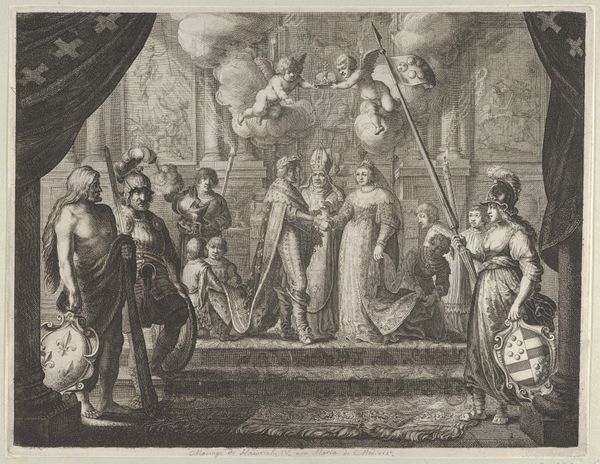
Allegorie met drie goddelijke deugden Geloof (Fides) en Hoop (Spes) en Liefde (Caritas) 1623 - 1660
0:00
0:00
engraving
#
allegory
#
baroque
#
old engraving style
#
figuration
#
history-painting
#
engraving
Dimensions: height 322 mm, width 379 mm
Copyright: Rijks Museum: Open Domain
Editor: This engraving, “Allegory with three divine virtues Faith (Fides), Hope (Spes) and Charity (Caritas)” by Pieter de Bailliu, dates sometime between 1623 and 1660. It feels very much of its time, with the flowing robes and symbolic figures. What do you see as the key influences at play here? Curator: Well, consider the sociopolitical context. The Counter-Reformation was in full swing, and visual art played a huge role in reaffirming Catholic doctrine. The engraving employs the traditional iconographic language to visually persuade. Do you notice how Charity is emphasized, centrally placed, surrounded by children, almost mirroring the Madonna figure? Editor: Yes, I see that. So, this imagery was consciously deployed as a… kind of propaganda? Curator: It's not quite as simple as "propaganda," but it served a similar function. It aimed to reinforce particular beliefs, defining "proper" Christian virtue in response to the rise of Protestantism. Look at the Faith figure – with the cross, and a chalice symbolizing the Eucharist. These aren't merely decorative elements; they represent core theological arguments of the era. Editor: That makes sense. So the art wasn't just beautiful, it was *doing* something, socially and religiously? Curator: Precisely! Think of engravings like these as mass communication before mass media. They circulated ideas, solidified identities, and actively participated in the shaping of early modern European culture. Editor: I never really thought about art that way, as such an active force! Curator: And I find it’s important to recognize these pieces for their active place in society at that time. They’re beautiful, yes, but even more significantly, they reflect a turbulent era where the politics of imagery mattered deeply.
Comments
No comments
Be the first to comment and join the conversation on the ultimate creative platform.
